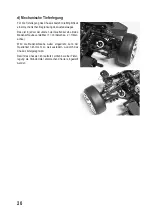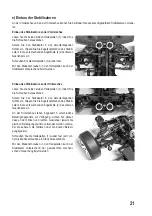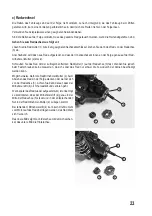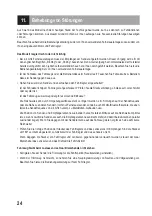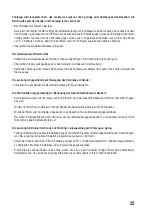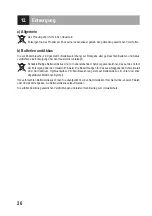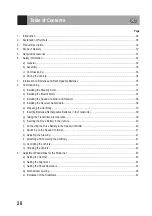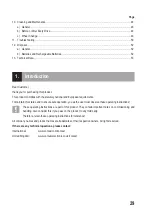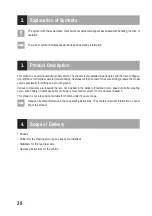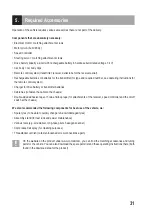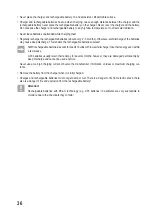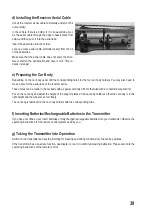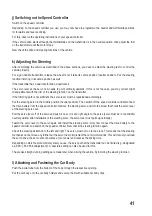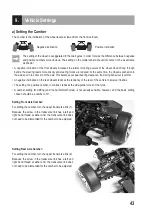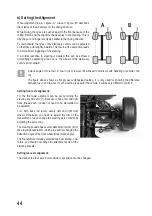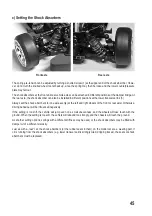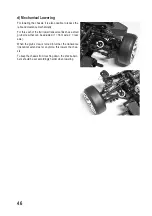
33
b) Assembly
• When setting up the vehicle, there is a danger of injury from sharp edges, pointy parts and improper handling of
tools.
• Incorrect assembly may lead to damage to vehicle parts and later to bad driving performance. Therefore, proceed
with care during assembly.
• Only set up the vehicle on a clean, sufficiently large, level, stable area, protect the surface from scratches, e.g. of a
work table with a suitable thick padding.
• Do not apply any force when putting together parts; do not overturn screws! However, observe that the screws, nuts,
etc. are fastened correctly.
Use screws/nuts with special threadlocker varnish for certain locations subject to special strain.
• Use suitable, impeccable high-quality tools for installation.
• Take your time!
• Fasten the speed controller used by you and the receiver, e.g., with double-sided adhesive tape (or hook-and-loop
tape) in the vehicle.
• Install the receiver in the vehicle as far as possible away from the speed controller and motor. The aerial of the
receiver also must be as far as possible away from the speed controller and motor.
• Do not bundle the cables between the motor and speed controller with the control cables of the steering servo and
the speed controller or the aerial cable.
• Observe that the cables from the receiver, steering servo, motor and driving battery cannot bet into turning or mo
-
vable parts of the vehicle. Use cable ties for fastening the cables.
c) Commissioning
• The drive mechanics are designed for an electric motor and a matching electronic speed controller. Never install a
combustion motor.
The build of the battery holder is specifically intended for a 2-cell LiPo drive battery (rated voltage 7.4 V) in
hardcase build.
When using a drive battery with multiple cells, the vehicle drive will overload and thus be damaged (e.g.
toothed belt). Loss of guarantee/warranty!
If a rechargeable battery with another build than a hardcase is to be used (e.g. a conventional 6-cell NiMH
Racingpack), secure fastening of the rechargeable battery in the vehicle is not ensured and the drive/
toothed belt may be impaired in its function. In this case, you need to make a matching battery holder your-
self.
• Place the vehicle on an appropriate support before connecting the drive battery so that the wheels can turn freely.
When putting the device into operation, always turn on the transmitter first. Only then must the vehicle‘s drive battery
be connected with the speed controller and the speed controller switched on. Otherwise, the vehicle may show
unpredictable responses!
• Check that the vehicle reacts to remote control commands as expected (steering and drive) before taking it from the
support and placing it on the ground with its wheels.


